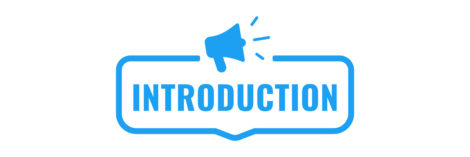There are many methods for collecting consumer opinions. In comprehensive market research, it is customary to combine different techniques and methodologies to gain as much feedback as possible and generate a base of concrete results that will help you achieve your goals. We focus in this article on qualitative interviews.
Summary
credits: Shutterstock
Introduction
The methodological structure we predominantly use includes the following triptych:
- The desk research, also called “the literature review”, aims at gathering published and investigated scientific data and analysis on the defined topic.
- The qualitative research, in the form of face-to-face or focus group interviews, aims to gather in-depth opinions and to identify new issues and perspectives that may have been overlooked in the literature review.
- The quantitative research, with a questionnaire often administered online, aims to validate the hypotheses put forward and the results of the previously mentioned research, and more particularly the qualitative research.
In this article, we take a closer look at the second stage of market research: Qualitative research. The aim is to understand the different types of interviews to find the one that best suits your project and allows you to obtain the desired results.

credits: Shutterstock
Unstructured interviews
This type of interview is characterised by the complete absence of an interview guide or structure of any kind. The aim here is to take a vast sweep of a given subject. The interviewer may have thought of a few questions or adjacent themes, but no documents are prepared in advance to help him, or her carry out the interview.
This type of interview is incredibly difficult to carry out, especially for beginners, because of the lack of structure. The second difficulty lies in the absence of direction in the questions. The questions are typically comprehensive and should not point the respondent in one direction or another, but rather allow him or her to express themselves as freely as possible.
The context for the use of free interviews
Free or unstructured interviews are particularly suitable in the early stages of research when the aim is to understand a subject or a market as a whole. They are useful when you have little knowledge of the given topic. The objective is to gather a mass of information and data on the defined topic to generate an overview of the subject.

credits: Shutterstock
Semi-structured interviews
Semi-structured interviews are, as the name suggests, more structured than free interviews but more flexible than structured interviews.
Semi-structured interviews are governed by an interview guide, which serves as a framework for the interview. The interviewer can refer to it to contribute to the discussion with the respondent and ensure that the conversation goes in the direction desired and defined by the project.
This type of interview is the most common type of interview used in qualitative research as it combines rigour in the themes and topics addressed and flexibility in the exchange. Thus, semi-structured interviews offer the possibility to deepen specific points that emerge during the discussion with the respondent. The aim here is to gather opinions and comments that might not have been detected in the preparation phases, and that will have a definite impact on the continuation of the project.
When to choose the semi-structured interview?
- You already have knowledge of the market and the subject you wish to investigate.
- You have defined a series of themes that are essential to the progress of your project
- You would like to receive complete, in-depth and comprehensive advice
Semi-structured interviews are ideal for understanding consumer behaviour, attitudes and habits while ensuring that you have not forgotten anything. Moreover, they can be adapted to any market research: satisfaction, launching a new product/service, entering a new market, brand awareness, loyalty-building, and so forth.
To learn more about semi-structured interviews and how to prepare yourself, we advise you to read this article that we have dedicated to conducting qualitative interviews.
In this context, the questions written are mainly open-ended questions allowing the respondent to express himself freely on the theme initiated by the interviewer. This form of interview gives the interviewer the freedom to go deeper into specific subjects, to change the order of the questions, or even to spend more time on some items than on others. The aim is not to follow the interview guide to the letter, but rather to ensure that the essential points of the interview have been discussed and that new comments have been expanded upon and understood.
A concrete example of a semi-structured interview
In 2019, IntoTheMinds carried out market research for Rockids, who specialise in childcare and has crèches and day-care centres in Luxemburg.
As part of this project, we conducted, among other things, semi-structured qualitative interviews with parents to understand the satisfaction and dissatisfaction factors related to day-care centres and day-care homes in Luxemburg.
The aim was, therefore, to understand what the prospects for improvement were for Rockids.

credits: Shutterstock
Structured interviews
This type of interview is carried out in a much stricter way than the two previous ones. The unique feature of the structured interview is that it can be conducted by different interviewers while ensuring that the answers are all organised and stated in the same form.
These interviews are guided by a predefined and very rigorous set of questions to which the interviewers must restrict themselves. No room for improvisation! The aim here is to collect a maximum number of standardised answers which are often expressed through closed questions. While, as we’ve seen, the objective of free and semi-structured interviews is to capture the opinions, attitudes and behaviour of consumers as well as to find out more about their habits, this type of interview leaves little room for storytelling or the free expression of the respondent.
In which context is the structured interview used?
This type of interview is particularly suitable for testing products and services. We can consider these interviews to be well ahead on the progression spectrum of research, between the semi-structured interviews and the quantitative phase. Moreover, they are close to quantitative methods due to their rigour.
You can use them to test a new product, a new version of your application, your software or your website, or to test the attractiveness of a new market to set up an international presence.
The structured interview model is particularly suitable for use in mystery shopping missions, where many elements need to be observed and analysed.
This interview format is incredibly easy to carry out. It can be conducted by various collaborators while ensuring the rigour of the results since the questions are systematically asked of the respondents, and with the same wording defined beforehand. They simplify the comparison of results between them and are particularly suitable for large-scale research (with many respondents).
In the majority of cases, as mentioned above, the structure of the interview involves closed-ended questions, to which the respondent can only answer “yes” or “no”. If this is not the case, respondents are often given suggested answers and will be asked to select one or more of them. This helps to standardise the results and simplify the analysis.
A concrete example of a structured interview
In 2019, we carried out qualitative research through structured interviews for a giant in the food industry (whose name we will not disclose for reasons of confidentiality).
To do this, we interviewed over 100 respondents to have them test 5 prototypes in preparation for the launch of a new product.
Structured interviews then appeared to be the method best suited to the respondent sample.

credits: Shutterstock
Conclusion
We can consider that these three types of interviews are part of the qualitative phase of market research. So, if we were to classify them in the chronological order in which they are carried out in a research study, we would recommend the following directive:

Note, however, that depending on your project, its state of development and your experience, one of these three options is likely to be preferable to the other two.
To help you to choose
- Assume that if you have conducted only a few interviews, you should avoid the unstructured (free) interview, which is challenging to accomplish.
- The semi-structured interview is ideal for gathering in-depth feedback that will enrich your reflection and can be adapted for all research.
- The structured interview is particularly suitable for large panels of respondents, product or service testing and the preparation of mystery shopping missions.
Illustrations : Shutterstock
Posted in Marketing.

15 January 2021
I am glad for reading this journal. This really help.
Thank you.
5 April 2021
As a student in the Masters of Research Methodology, this article is very helpful to me. I am currently designing a research and this article is very useful to guide me.
15 July 2021
this reading has a lot of useful insights when faced what choice to make
23 September 2021
so helpful in my research.